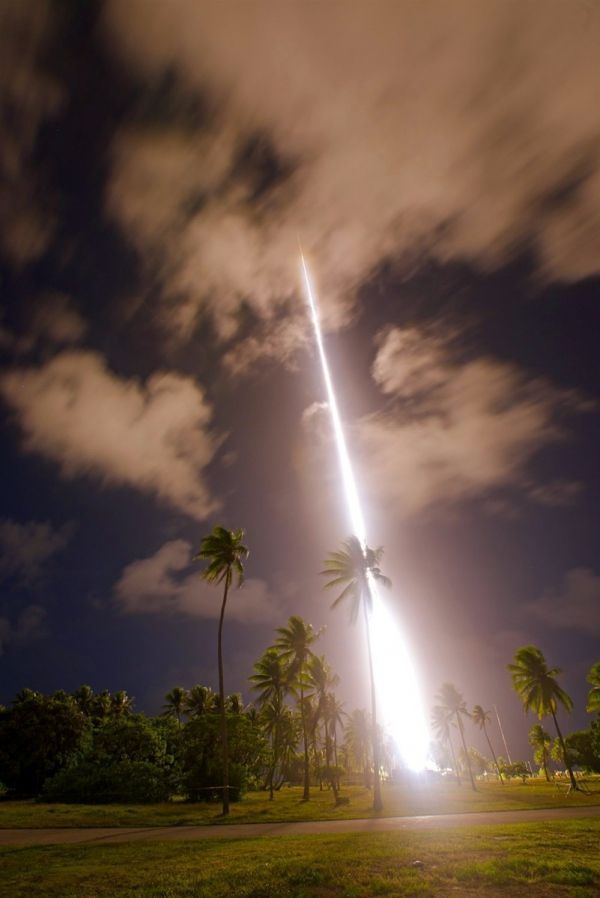Two NASA sounding rockets soared into the late-night heavens above the small, lightly populated Kwajalein Atoll in the Marshall Islands on June 19. They deployed two tracers – one that forms artificial clouds – perfect for studying communication disruptions in the upper atmosphere.
The rockets were sent to the edges of the atmosphere to gather information for the “Waves and Instabilities from a Neutral Dynamo” mission, better known as Too-WINDY.
“The data won’t be intelligible until it has undergone considerable processing, which will take us weeks or months,” said the project’s lead investigator David Hysell, professor and chair of Cornell’s Department of Earth and Atmospheric Sciences.
Read more at Cornell University
Image: A sounding rocket launches June 19 on Kwajalein Atoll in the Marshall Islands. CREDIT: NASA


